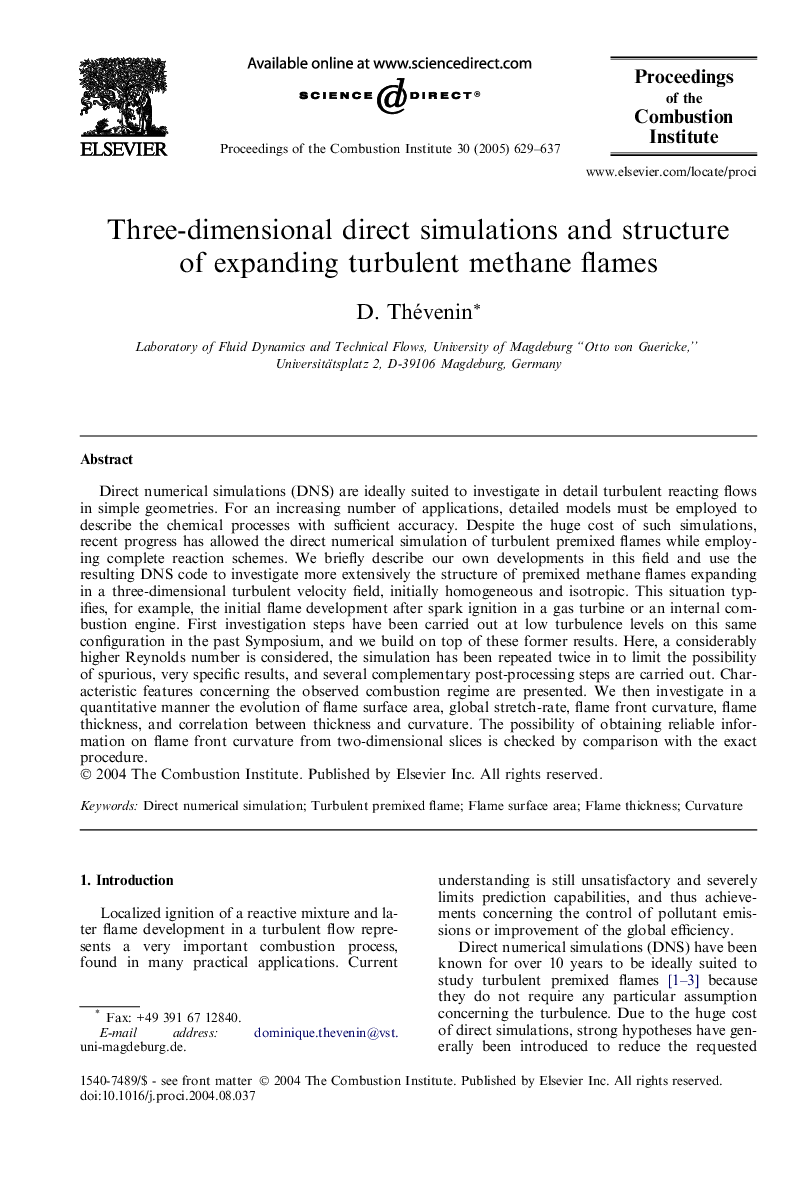| Article ID | Journal | Published Year | Pages | File Type |
|---|---|---|---|---|
| 9637385 | Proceedings of the Combustion Institute | 2005 | 9 Pages |
Abstract
Direct numerical simulations (DNS) are ideally suited to investigate in detail turbulent reacting flows in simple geometries. For an increasing number of applications, detailed models must be employed to describe the chemical processes with sufficient accuracy. Despite the huge cost of such simulations, recent progress has allowed the direct numerical simulation of turbulent premixed flames while employing complete reaction schemes. We briefly describe our own developments in this field and use the resulting DNS code to investigate more extensively the structure of premixed methane flames expanding in a three-dimensional turbulent velocity field, initially homogeneous and isotropic. This situation typifies, for example, the initial flame development after spark ignition in a gas turbine or an internal combustion engine. First investigation steps have been carried out at low turbulence levels on this same configuration in the past Symposium, and we build on top of these former results. Here, a considerably higher Reynolds number is considered, the simulation has been repeated twice in to limit the possibility of spurious, very specific results, and several complementary post-processing steps are carried out. Characteristic features concerning the observed combustion regime are presented. We then investigate in a quantitative manner the evolution of flame surface area, global stretch-rate, flame front curvature, flame thickness, and correlation between thickness and curvature. The possibility of obtaining reliable information on flame front curvature from two-dimensional slices is checked by comparison with the exact procedure.
Related Topics
Physical Sciences and Engineering
Chemical Engineering
Chemical Engineering (General)
Authors
D. Thévenin,
